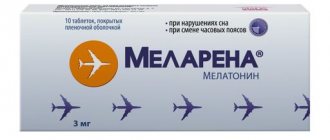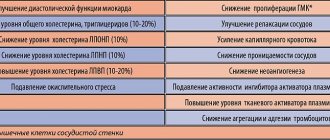Diseases caused by EBV
Epstein-Barr viral infection usually occurs in children and young adults. However, they can be observed at any age. The clinical manifestations of the infection are extremely diverse and have varied symptoms, which greatly complicates diagnosis. As a rule, manifestations of EBV develop against the background of decreased immunity, which is characteristic of all herpesvirus infections. Primary forms of the disease and its relapses are always associated with congenital or acquired immunodeficiency. People with severe immunodeficiency experience generalized forms of infection affecting the central nervous system, liver, lungs and kidneys. Often, severe forms of EBV infection may be associated with HIV infection.
Prevention
1. In order to avoid infection with the Epstein-Barr virus, teach your child personal hygiene from an early age.
2. In autumn and winter, avoid large crowds of people, since sneezing and coughing also have a chance of transmitting the Epstein-Barr pathogen.
3. Lead a healthy lifestyle, since the Epstein-Barr virus, after entering the body, can remain in it for a long time in a latent form (symptoms appear when the immune system is weakened, physical exhaustion, if treatment for another disease is interrupted).
Course of EBV infection
In people with normal immunity, after infection with EBV, two options are possible. The infection may be asymptomatic or manifest itself in the form of minor symptoms resembling influenza or acute respiratory viral disease (ARVI). However, in case of infection against the background of an existing immunodeficiency, the patient may develop a picture of infectious mononucleosis.
In the event of the development of an acute infectious process, several options for the outcome of the disease are possible: – recovery (DNA of the virus can be detected only with a special study in single B-lymphocytes or epithelial cells); – asymptomatic virus carriage or latent infection (the virus is determined in saliva or lymphocytes in the laboratory); – development of a chronic relapsing process: a) chronic active EBV infection of the type of chronic infectious mononucleosis; b) a generalized form of chronic active EBV infection with damage to the central nervous system, myocardium, kidneys, etc.; c) erased or atypical forms of EBV infection: prolonged low-grade fever of unknown origin, recurrent bacterial, fungal, often mixed infections of the respiratory and gastrointestinal tract, furunculosis; d) development of oncological diseases (Burkitt's lymphoma, nasopharyngeal carcinoma, etc.); e) development of autoimmune diseases; f) EBV-associated chronic fatigue syndrome.
The outcome of an acute infection caused by EBV depends on the presence and severity of immune deficiency, as well as on the presence of a number of external factors (stress, concomitant infections, surgical interventions, hyperinsolation, hypothermia, etc.) that can disrupt the functioning of the immune system.
Clinical manifestations of EBV infection
Clinical manifestations of diseases caused by EBV largely depend on the severity of the process. The primacy of the infectious process or the occurrence of clinical symptoms of chronic infection is also important. In the case of the development of an acute infectious process due to EBV infection, a picture of infectious mononucleosis is observed. It usually occurs in children and young adults.
The development of this disease leads to the appearance of the following clinical signs: – increased temperature, – enlargement of various groups of lymph nodes, – damage to the tonsils and hyperemia of the pharynx. Quite often there is swelling of the face and neck, as well as an enlargement of the liver and spleen.
In the case of chronically active EBV infection, a long-term relapsing course of the disease is observed. Patients are concerned about: weakness, sweating, often pain in muscles and joints, the presence of various skin rashes, cough, discomfort in the throat, pain and heaviness in the right hypochondrium, headaches, dizziness, emotional lability, depressive disorders, sleep disturbances, decreased memory, attention , intelligence. Low-grade fever, enlarged lymph nodes and hepatosplenomegaly of varying severity are often observed. Usually this symptomatology has a wave-like character.
In patients with severe immune deficiency, generalized forms of EBV infection may occur with damage to the central and peripheral nervous systems (the development of meningitis, encephalitis, cerebellar ataxia, polyradiculoneuritis), as well as damage to other internal organs (the development of myocarditis, glomerulonephritis, lymphocytic interstitial pneumonitis, severe forms of hepatitis). Generalized forms of EBV infection can be fatal.
Quite often, chronic EBV infection proceeds silently or may resemble other chronic diseases. With erased forms of infection, the patient may be bothered by wave-like low-grade fever, pain in the muscles and lymph nodes, weakness, and sleep disturbances. In the case of an infectious process under the guise of another disease, the most important signs are: duration of symptoms and resistance to therapy.
Relevance
One of the pressing problems of modern medicine is the high incidence of herpesvirus infections, which are quite widespread in the human population.
The complex structure of the genome of viruses of the herpes family, compared to other DNA-containing viruses, determines the main differences in their replication cycle. Genes encoding structural proteins make up only 15% of the DNA in herpes viruses, while the majority of the genome consists of areas responsible for the synthesis of regulatory proteins and enzymes, and it is this feature that allows them to implement a completely unique program, including the possibility of a latent, persistent and reactivated state in infected organism [1]. A special place among herpes viruses is occupied by Epstein-Barr virus (EBV), which infects 95% of the population and, like all herpes viruses, it is capable of infecting almost all organs and systems of the body, causing latent, acute and chronic forms of infection, prone to reactivation in conditions of immunosuppression . Active proliferation of the virus in all organs and systems that have lymphoid tissue leads to structural changes that have an adverse effect on the body as a whole. The key role of EBV in the development of diseases such as acute and chronic mononucleosis, interstitial pneumonitis, myocarditis, hepatitis, tumors of lymphoid and epithelial tissues, hemophagocytic lymphohistiocytosis, leukoplakia of the tongue and post-transplantation lymphoproliferative complications has been proven.
Laboratory research
Considering that it is impossible to make a clinical diagnosis of EBV infection, laboratory diagnostic methods are leading in determining the disease.
They can be divided into two groups: screening and clarifying:
1. Screening tests include those that, along with clinical symptoms, allow one to suspect EBV infection. In a clinical blood test: slight leukocytosis, lymphomonocytosis, possibly thrombocytopenia may be observed. A biochemical blood test reveals: increased levels of transaminases and other enzymes, acute phase proteins - C-reactive protein, fibrinogen, etc. However, these changes are not strictly specific to EBV infection (they can also be detected in other viral infections).
2. An important study to determine the presence of a pathogen in the body is a serological examination: an increase in titers of antibodies to EBV is a criterion for the presence of an infectious process at the present time or evidence of contact with an infection in the past. However, the presence of antibodies does not allow us to say unambiguously that the clinical manifestations of the disease are caused by EBV.
3. To obtain the most reliable results, DNA diagnostics is used. Using the polymerase chain reaction (PCR) method, EBV DNA is determined in various biological materials: saliva, blood serum, leukocytes and peripheral blood lymphocytes. If necessary, research is carried out in biopsy samples of the liver, lymph nodes, intestinal mucosa, etc. Thus, to make a diagnosis of EBV infection, in addition to general clinical examinations, serological tests (ELISA) and DNA diagnostics of infection in various materials over time are necessary.
Introduction
Epstein-Barr virus (EBV) belongs to the family Herpesviridae, subfamily gamma - Herpesviridae.
This DNA containing virus was named after the English virologist Michael Anthony Epstein, who, together with co-authors. (B. Achon and I. Barr) in 1964 first isolated it from Burkitt's lymphoma cells and described it using electron microscopy. In 1979, its name was changed to human herpes virus type 4, and in 2016 to human gammaherpesvirus.
EBV is a lymphotropic virus that has the ability to replicate in B lymphocytes and, by disrupting cell apoptosis, activates their uncontrolled proliferation. During the process of virus replication, over 70 different virus-specific proteins are expressed, in particular early, nuclear, capsid antigens, and latent membrane protein, which in turn induce the production of corresponding antibodies [1–3].
Prevalence
EBV is one of the most common human viruses; it persists in more than 90–95% of the world’s population over 40 years of age and remains the main cause of infectious mononucleosis (IM) [4–6].
After primary infection, the virus integrates into the genome of healthy B-lymphocytes and then, like all herpes viruses, persists in the body for life. In B lymphocytes, it is constantly slowly replicated, periodically entering the oropharynx, mainly with saliva. This creates the possibility of further spread of the virus by airborne droplets or contact [7, 8]. It is believed that 20–30% of healthy individuals constantly secrete EBV [9]. Therefore, latent carriers are low but constantly contagious and other people can become infected through close contact, through utensils, etc. Infection is also possible through organ transplantation and blood transfusion [2]. However, since the majority of people are seropositive, in most cases there is no point in taking any preventive measures [10].
Thus, most people become infected in childhood from their parents or in a group of children. The incubation period ranges from 4 to 8 weeks. Next, most people develop an acute disease with quite characteristic clinical symptoms - MI.
MI was first described by N.F. Filatov in 1885 under the name “idiopathic inflammation of the cervical glands.” In 1889, the German scientist Emil Pfeiffer described a similar clinical picture of the disease and defined it as glandular fever affecting the throat and lymphatic system. The modern name, proposed in 1920 by Sprunt and Evans, reflects the nature of blood changes and the infectious nature of the disease [11].
Every year, up to 10–20% of people are infected with EBV. According to the World Health Organization, about 55–60% of children on Earth under the age of 3 are infected. In developed countries and socially prosperous families, infection occurs at an older age, often in adolescence. If in Central Africa almost all children are infected by 3 years of age [9], in southern India up to 90% are infected by 5 years of age, then in the United States about 50% of children under 5 years of age are seropositive [12].
However, the incidence of MI varies depending on age. Children under 6 months of age practically do not get sick; the proportion of latent forms in children in the first 24 months of life reaches 90%. After 3 years, the incidence increases sharply and reaches a maximum in people after 10 years, i.e. in adolescents and young adults (26–74%). After 30 years, MI is rarely diagnosed - less than 1 case per 1000 people. In elderly people, EBV infection practically does not lead to MI [3–6].
Therefore, the literature data regarding the frequency of MI after primary infection is so different: according to some reports, it develops no more often than 20–30% of cases [3], according to others – in 77% [5].
Not least important in the structure of disease risks are factors such as the degree of personal hygiene, the use of disinfectants, the size of the family, and the presence of breastfeeding. There is evidence that breastfeeding reduces the risk of developing the classic picture of MI in early childhood [13].
In Moscow, from 2014 to 2016, the incidence of EBV MI was 97.0 per 100 thousand population, i.e. the epidemic threshold level was exceeded. The structure of cases was dominated by children (more than 70%) [14].
A study was conducted in a Chinese hospital that showed an increase in the incidence of EBV mononucleosis from 2014 to 2022 from 4.99 to 12.16 cases per 1000 visits. In 74.7% of cases, the age of patients was under 4 years, among whom children from 6 to 12 months were most often ill. In children aged 4–6 years, MI was diagnosed in 11.06% of cases and in 14.22% in children aged 6–15 years [6].
A study of college students newly infected with EBV showed that MI was diagnosed in 77% of cases, 12% developed atypical symptoms that did not meet the criteria for MI, and 11% of students were asymptomatically infected [5].
MI is a nongenetic syndrome characterized by the classic triad of symptoms: fever, tonsillitis, cervical lymphadenitis, and is usually accompanied by lymphocytosis. Up to 90% of MI cases are caused by EBV. A disease clinically similar to MI can also be caused by cytomegalovirus, adenovirus, herpes virus type 6, toxoplasma, HIV, which is also reflected in the International Classification of Diseases, 10th revision (B27). Usually in practice, non-EBV mononucleosis is called mononucleosis-like syndrome [3, 10, 15].
Classic MI also has many synonyms. In literature sources of various dates one can find such names as glandular fever, Filatov’s disease, Pfeiffer’s disease, monocytic tonsillitis, benign lymphoblastosis and even kissing disease [10].
Due to continued active replication after MI, patients excrete high levels of EBV in saliva for another 6–12 months. But taking into account the seropositivity of the majority of people, as mentioned above, no special measures are taken in most cases [16, 17].
Clinical picture
EBV has no seasonal circulation, and there is no gender predisposition to it [4]. However, the severity of clinical symptoms of MI depends on the age of the patient. Young children get sick relatively easily even in the presence of characteristic systemic signs of the disease; in addition, a latent course of MI or an atypical clinical picture can often be observed in this age category [18, 19]. In 70% of cases, adolescents and adults develop a severe classic picture of glandular fever [20], which may be due, among other things. with simultaneous exposure to a mass of viruses through contact transmission [19, 21]. Taking into account the pathogenesis of the disease, the most obvious specific clinical sign is hypertrophy of lymphoid tissue - these are the palatine and pharyngeal tonsils, lymph nodes, liver, spleen.
Fever. MI almost always occurs with fever; according to the literature, its frequency ranges from 45 to 90% of cases [5, 16]. The height of the temperature is not very important, but it is usually a febrile fever lasting an average of 2-4 weeks. In older children, high temperatures are often recorded once a day in the evening. They are also characterized by “drenching sweat” as the temperature drops.
Tonsillitis. Hyperemia of the mucous membrane of the pharynx and tonsils, as well as sore throat are the most common symptoms and are observed in more than 90% of cases. Young children rarely complain of appetite or refuse to eat because of pain when swallowing, but in adolescents, in terms of severity, sore throat comes first among complaints. Symptoms may gradually intensify during the first week of the disease, at the same time the palatine tonsils become significantly enlarged, and dense white or white-yellow deposits often appear on them [5].
Cervical lymphadenitis. Occurs in 76–98% of patients [5, 22]. Lymphadenitis is characterized by a significant increase in the anterior and posterior groups of cervical lymph nodes, which distinguishes MI from bacterial tonsillitis, when lymphadenopathy is usually limited to the anterior-superior group of lymph nodes. On palpation, the nodes are usually of a dense elastic consistency, moderately painful, often with swelling of the surrounding tissues [22].
In the absence of purulent complications, there is no skin hyperemia or fluctuation; ultrasound examination visualizes signs of serous lymphadenitis [10].
Difficulty in nasal breathing. In addition to the palatine tonsils, in the acute phase of the disease the pharyngeal tonsil enlarges significantly, which significantly complicates nasal breathing, and sometimes leads to its complete absence. Nasal discharge, if present, is usually scanty and serous in nature. Mucus is visualized in the common nasal passages with free middle passages during anterior rhinoscopy or along the posterior wall of the pharynx.
In adolescents, plaque can often be observed not only on the tonsils, but also on enlarged adenoids.
Thus, with a significant increase in the palatine and pharyngeal tonsils, conditions are often created for obstruction of the upper respiratory tract, mainly in young children [23]. Difficulty breathing is experienced by the majority of patients (61%) with MI [4].
Hepatosplenomegaly. Enlargement of the liver or spleen, and most often hepatosplenomegaly, is a typical symptom of MI, which is present in most patients, regardless of age. As a rule, it is not accompanied by pain and skin changes [24], however, biochemical markers of liver dysfunction as a consequence of EBV hepatitis are not uncommon. The level of transaminases (aspartate aminotransferase and alanine aminotransferase) can increase from the 2nd day of the disease, sometimes reaching five norms, and during maintenance therapy decreases on average after the 20th day. According to Greek scientists, the titers of alkaline phosphatase, γ-glutamyltransferase and bilirubin do not increase so significantly and usually normalize after the 20th, 30th and 22nd day from the onset of the disease, respectively. Signs of cholestasis in the same study were observed in 59% of cases, while icterus was described in only 6% of patients. Thus, changes in the liver during acute MI are moderate and normalize on their own [24].
Splenomegaly can be significant, reaching its peak usually in the second, rarely in the third week of the disease. An American study showed that the maximum spleen enlarges by an average of 33.6% and, after reaching its peak, it independently decreases by approximately 1% per day [25]. In 84% of cases, the size of the spleen returns to normal within 3–4 weeks [10].
People over 60 years of age have a higher risk of developing jaundice than younger adults (26 vs. 8%), while lymphadenopathy, sore throat, and splenomegaly are less common [4].
Rash. A rash is an optional symptom of MI, but can occur in 3–15% of cases and is characteristic mostly of young children. It usually has a pink maculopapular character, without itching, spreading to the skin of the face, torso and extremities. The use of amoxicillin with incorrect interpretation of the diagnosis and unidentified EBV etiology leads to a much more frequent appearance of exanthema, usually on the 5th–7th day from the start of treatment.
“Ampicillin rash,” a phenomenon unique to patients with EBV MI treated with amoxicillin, was first described in the 1960s. It has been reported that it can be observed in 80–100% of cases [26].
A study was conducted in Israel to evaluate skin changes in children with MI. The results showed that in patients treated with the antibiotic, rash was reported in 32.9% of cases, which was not significantly higher than that in untreated children (23.1% of cases). Amoxicillin use was associated with rash in 29.5% of cases, which is significantly less common than previously reported. Age, sex, race, history of atopy, or allergy had no effect on the occurrence of rash during antibacterial treatment. It has also been shown that patients who did not have a rash had leukocytosis in laboratory parameters [26].
American experts analyzed the English-language literature from 1946 to 2016 regarding rash with antibacterial accompaniment of MI. Most publications concerned three main antibiotics: ampicillin, azithromycin and amoxicillin. They also showed that in the 1960s. Rash was reported significantly more often (55.6%, 45% and 33%) than in 2013 (33% and 15%). Thus, the authors concluded that the incidence of rash with antibiotic use in children with MI is overestimated [27]. The mechanism of amoxicillin rash in most cases is caused by a transient virus-mediated immune restructuring, leading to a decrease in antibiotic tolerance and the development of a reversible delayed-type hypersensitivity reaction [27].
Exanthema does not correlate with the severity of the disease, does not cause inconvenience to the patient, and in most cases does not require any treatment. Usually within 3–5 days it undergoes reverse development and disappears without a trace. The fact and timing of amoxicillin withdrawal also do not affect the nature and duration of skin changes.
Asthenic syndrome. Lack of appetite, pain, and severe difficulty in nasal breathing worsen your health. It is believed that it is much more severe in MI than in bacterial tonsillitis [10]. The prolonged course of the disease and high fever with significant daily temperature fluctuations lead to asthenia in more than 60% of patients [4]. This is especially pronounced in older children, when fever lasts more than a week with frequent use of antipyretics. More than 40% of patients complain of myalgia, headache, and loss of appetite [5]. Weakness and fatigue may persist for several weeks after recovery [28].
Some studies have reported cases of chronic fatigue syndrome (CFS) after MI. Such complaints were reported by 7.3 to 12.0% of adult patients, sometimes within 6 months. However, no clear relationship between CFS and EBV has been identified. In Ireland, in a thorough examination of more than 1300 patients with proven MI, 10% of respondents complained of malaise, but none of them met the criteria for CFS. Most likely, cases of CFS are not a direct consequence of MI, but are still of a multifactorial nature [10].
An American study of college students newly infected with EBV found that the duration of illness varied from 3 to 66 days [5]. In most patients, clinical symptoms resolve within 2–4 weeks. However, in approximately 20% of cases, sore throat may persist for up to 1 month [10, 21].
Complications
In most cases, MI progresses favorably and resolves on its own. Rarely, some complications are possible.
A serious consequence of splenomegaly during MI is splenic rupture, but its frequency is exaggerated and in fact does not exceed 0.1–0.5% of cases [10, 29]. British scientists report 85 cases of splenic rupture described in the literature over the past 30 years [30]. The main symptom is abdominal pain, not associated with a previous injury. The risk of rupture of the splenic capsule increases with significant physical exertion, sports, or other high activity, accompanied by an increase in intra-abdominal pressure in the first 3 weeks of the disease, but such cases have been described even for up to 8 weeks. In 70% of cases, complications occurred in men [10, 29].
In addition, Korean authors point to 19 cases of splenic infarction described in the literature over the past 54 years. The first symptom of the condition was also pain in the left hypochondrium [31].
In children under 6 years of age, there is a risk of upper respiratory tract obstruction due to hypertrophy of the palatine and pharyngeal tonsils, which is the main reason for hospitalization. However, the condition requires intensive treatment no more often than in 5% of cases.
Hematological complications of MI occur, especially hemolytic anemia (3%) and thrombocytopenia (25–50% of cases), rarely aplastic anemia, pancytopenia and agranulocytosis.
Neurological disorders such as encephalitis, meningoencephalitis, serositis, optic neuritis, acute sensorineural hearing loss, idiopathic facial nerve paresis, Guillain–Barré syndrome, which developed against the background of MI, are described in 1–5% of patients. Other rare acute complications include myocarditis, pericarditis, pancreatitis, interstitial pneumonia, rhabdomyolysis, and psychological disorders (eg, Alice in Wonderland syndrome). Many of these complications are described as isolated cases, and their direct relationship with MI may be questionable [10].
In immunosuppressed individuals with uncontrolled lymphoproliferation and the development of hemophagocytic syndrome, a fulminant course of MI is possible. A study of the case histories of 157 men with X-linked lymphoproliferative syndrome showed that mortality from complications in fulminant MI was 96% [29].
Diagnostics
With a characteristic clinical picture and the exclusion of streptococcal tonsillitis, in most cases there is no absolute need for laboratory confirmation of the diagnosis [10]. It is required in the early stages of a serious illness or in young children with an incomplete set of symptoms and an erased clinical picture.
Before 2010, the diagnosis of MI, in addition to clinical symptoms, could be based on the Hoagland criteria, which include lymphocytosis of at least 50% and the presence of at least 10% atypical mononuclear cells (AM) in the peripheral blood [11]. This is due to the fact that the appearance of atypical mononuclear cells has a specificity of 92.3%. And the level of lymphocytes below 4×109/l is not typical for MI and has a negative predictive value of up to 99% [4].
Due to their structural features, AMs are also called “wide-plasma lymphocytes.” According to the literature, they can be detected in more than 95% of cases when examining routine peripheral blood smears of patients with MI and in all patients using the leukocyte concentration method [32].
Studies show that in 20% of cases, early AM are immortalized B-lymphocytes, then the majority of AM are T-lymphocytes, some of which are CD8+ cells, some are CD4+, etc. AM are involved in the lysis of damaged B-lymphocytes and regulation of polyclonal secretion of immunoglobulins.
It is believed that AM can be detected already in the first days of MI with a peak in the 2nd week of the disease. Then they circulate in the blood for up to 2–3 weeks, sometimes for a month [32]. However, in our study, AM was detected only in 9% of children with MI. In addition, the results showed that lymphocytosis was observed in 49% of cases, neutrophilia was detected in 11% [33]. In general, a high level of leukocytes and/or other markers of bacterial inflammation does not exclude the diagnosis of MI and can occur in 40% of cases [10, 23].
Serological diagnosis. MI is accompanied by a serological response in the form of the appearance of heterophilic and specific antibodies. Detection of specific immunoglobulins class M (IgM) to the EBV capsid antigen (VCA) is currently considered the most significant in the diagnosis of primary MI. They can be detected in the patient’s serum no earlier than the 4th day of illness, the titer becomes maximum by the 3rd–4th week, then they circulate for 2–3 months, in some individuals up to a year. Unlike IgM, IgG to the capsid antigen is not used to diagnose acute MI. They are produced only a few weeks after the onset of clinical symptoms and can then be detected throughout a person’s life. Even less often, in the diagnosis of acute disease, they focus on IgG seroconversion to nuclear antigen (EBNA). Neutralizing antibodies suppress EVB-induced proliferation and transformation of B lymphocytes and can be detected within 3 weeks of the onset of MI. Their titer increases over 3–4 months and then remains at this level for about 2 years.
In most adults, neutralizing antibodies persist for many years. There was no correlation between the severity of the disease and the peak level of antibodies to viral proteins or neutralizing antibodies [5]. Detection of specific antibodies to EBV for the diagnosis of MI has a sensitivity of 97% and specificity of 94% [4].
Thus, primary EBV infection can be confirmed in the presence of IgM to the capsid antigen in the absence of antibodies to the nuclear antigen, which indicate an existing disease [10].
Express test. Due to the need to prescribe adequate treatment for children with MI as early as possible during the course of the disease, it is necessary to have the opportunity for laboratory diagnosis not just in the first 3 weeks from the onset of symptoms, but on the day they seek help. Therefore, research in attempts to select such a technique is being carried out quite actively. An express test for diagnosing EBV infection, Monospot, immediately became widespread. It is developed on the basis of the previously used Paul-Bunnel reaction - latexagglutination with the determination of hetorophilic antibodies. Monospot has high specificity (from 84 to 100%), but the sensitivity of the test, according to various sources, ranges from 63–84 to 70–90% [4, 34]. It is especially low in children under 4 years of age, and this is precisely the category of patients in whom mononucleosis can occur in an erased, atypical form. Moreover, in the first week of the disease, the probability of a false negative test result is 25% [34]. Under the age of 12 years, Monospot is positive only in 25–50% of children with MI [17]. Therefore, the EBV Control Center in the United States currently does not recommend the use of rapid testing for routine diagnosis of infection, despite the fact that serological testing is more time-consuming and more expensive [4, 34].
Qualitative analysis. For the earliest possible diagnosis, in case of inconclusive antibody levels, polymerase chain reaction (PCR) can also be used [10]. Detection of viral DNA in material from the oropharynx (saliva, epithelium) using PCR is possible from the very beginning of the disease, incl. with determination of viral load [35]. It should also be taken into account that active viral shedding persists for up to 6 months after an MI [16].
Taking into account the previously described constant replication of the virus in the body and its release from oropharyngeal secretions, based on PCR, it is difficult to distinguish a virus carrier from a person who has developed myocardial infarction for the first time. The number of false positive results in PCR diagnostics exceeds 15%. In addition, the need for specialized equipment and the high cost of the study should be taken into account [10].
Treatment
Typically, MI is a benign, self-limiting disease requiring only symptomatic therapy [36]. The mainstay of treatment, as with most viral infections, is supportive care with adequate hydration. Severe pain and fever cause the prescription of non-steroidal anti-inflammatory drugs (NSAIDs) or paracetamol. For sore throat, lozenges, sprays or gargles containing NSAIDs, 2% lidocaine solution or other analgesics can also be used [37].
As with other tonsillitis, many authors propose systemic glucocorticosteroids (GCS) for the treatment of MI as a symptomatic remedy. They are reported to be active in relieving fever, reducing the severity of symptoms, and normalizing blood counts [10, 17]. However, other authors deny the significant role of GCS in reducing the severity and duration of MI and their superiority compared to other analgesics [4, 29, 37].
However, it has been proven that GCS lead to a significant reduction in sore throat. Due to the limitation of action to only 12 hours, their repeated administration is required [4, 10, 17, 29, 37]. In addition, against the background of GCS, the risk of complications such as upper respiratory tract obstruction, hemolytic anemia, and thrombocytopenia is reduced [10,17].
Therefore, systemic corticosteroids can be recommended for severe MI, especially for adolescents with prolonged febrile fever, severe pain, and also with a high risk of upper respiratory tract obstruction [4, 29, 37], which we actively use in our clinic.
Previously, acyclovir and other antiviral drugs were actively used in the treatment of MI. Moreover, a decrease in EBV replication and the level of virus in saliva and oral mucosa at the end of treatment was shown [10, 17, 36]. However, current studies indicate that there is no evidence base for the effectiveness of antiviral drugs in the treatment of MI (p = 0.23) [10, 17]. A meta-analysis of 5 randomized controlled trials showed that acyclovir is clinically ineffective and does not reduce the duration and severity of MI either when used alone or in combination with prednisolone [4, 29].
Other antiviral drugs, such as valacyclovir, ganciclovir, also reduce the number of viruses in the oral cavity, but this does not lead to any clinical improvement and does not reduce the length of hospital stay [4, 29, 37].
The issue of prescribing antiviral drugs is still being actively studied, but currently their routine use in the treatment of MI is not supported by most authors and is not included in international consensus documents [36].
However, a number of studies indicate some improvement in the condition when treating severe MI with valacyclovir in immunocompromised patients [10, 17, 35].
In routine practice, antibacterial drugs are also not used to treat MI: firstly, they are not effective against viral infection and in preventing bacterial complications, and secondly, their use is associated with the risk of exanthema. However, in severe cases complicated by bacterial infection, antibacterial therapy can be considered individually [4, 17].
Research is also being conducted into the advisability of using other drugs in patients with uncomplicated mononucleosis. In particular, this applies to metronidazole and ranitidine [4, 37].
There are no strict recommendations regarding the need for bed rest in acute illness [17]. Moreover, forced bed rest is believed to slow down recovery and is associated with long-term asthenia. On the contrary, it has been noted that a gradual expansion of physical activity from the moment the patient feels this opportunity within himself leads to a speedy recovery and return to normal activity [17, 28, 37].
In the case of severe splenomegaly, to minimize the risk of splenic rupture, dynamic ultrasound monitoring of the size of the spleen and limiting excessive physical activity within 1–2 months from the onset of the disease are recommended [10, 30].
Other diseases associated with EBV
After an acute MI, the patient makes a complete clinical recovery and remains a latent carrier of the virus for life. World literature indicates that the Epstein–Barr virus is the causative agent of not only benign MI, but also some malignant oncological and immunological diseases [1, 10]. Rarely, in immunosuppressed individuals, the virus may reactivate with the development of some lymphoproliferative conditions. This is a heterogeneous group of diseases that often require chemotherapy [10]. For example, there is no doubt that there is a connection between EBV and Burkitt's lymphoma in children and undifferentiated nasopharyngeal cancer. Two Scandinavian studies showed that the risk of developing Hodgkin lymphoma increases approximately 2.5-fold in patients with MI. And in 2014, data were published according to which Hodgkin lymphoma has only EBV etiology [10]. Other sources indicate that it can provoke up to 1% of all neoplasms [3].
Two main genotypes of EBV are known. Perhaps further research into the study of virus subgenotypes will shed light on their connection with malignancy [2].
As a result of the damaging effect of the virus on lymphoid cells and the reticuloendothelial system, some clinical manifestations and changes in hematological parameters are often mistaken for any oncological conditions. In the literature, we often encounter cases of acute EBV infection occurring, for example, under the guise of acute leukemia [38].
However, among the publications on this topic, it is difficult to clearly identify sources reporting the risk of malignancy in patients with EBV. But, despite the described mechanisms of dysfunction of the immune system and the formation of immune-mediated diseases after infection with EBV, taking into account the almost 100% infection of people on the planet, there are no specific clinical, instrumental or laboratory data indicating a direct dependence of these conditions on the virus. And most of the reports are currently only speculative [39].
The most recent meta-analysis showed that 95% of patients with multiple sclerosis had an MI and EBV was isolated in 100% of cases. This allowed the authors to conclude not just about the role of the virus in increasing the risk of developing the disease, but to talk about it as a predictor of multiple sclerosis. However, evidence of such a statement has not yet been obtained [10].
In addition, patients and many doctors are constantly wary of the chronic course of EBV infection, which has become the reason for uncontrolled frequent serological examinations. The literature reports that chronic active EBV infection is still an extremely rare condition, characterized by repeated episodes of mononucleosis-like syndrome after a proven primary disease in an initially healthy person [10].
The prevalence of EBV has become the reason for the development of a vaccine against this virus; however, despite many years of work, only phase II research is currently being conducted [10].
Conclusion
The extremely high prevalence of EBV infection among people and the high risk of developing associated conditions make the issue of further close study of the virus one of the leading positions.
On the one hand, there is excessive wariness of both parents and doctors regarding oncological diseases associated with the virus, despite the fact that in the vast majority of cases, myocardial infarction proceeds favorably only against the background of supportive symptomatic therapy, without causing any consequences. At the same time, clinically significant MI requires timely differential diagnosis and adequate treatment. It is important to exclude streptococcal tonsillitis. At the same time, the clinician needs to alleviate the patient’s condition, reduce the severity of the symptoms of the disease and not miss possible complications, correctly assessing the indications for systemic antibacterial and antiviral therapy.
Treatment of EBV infection
Currently, there are no generally accepted treatment regimens for EBV infection. The volume of therapy for patients with both acute and chronic active EBV infection may vary, depending on the duration of the disease, the severity of the condition and immune disorders. In the complex treatment of this disease, various groups of drugs are used, including recombinant interferons, which suppress the reproduction of the virus, protect uninfected cells, and strengthen the immune system. In addition, acyclic synthetic nucleosides and other antiviral drugs are used to stop virus replication in the affected cells, as well as glucocorticoids, the action of which is aimed at stopping inflammatory processes in organs and tissues. Depending on the severity of certain symptoms of the disease, various symptomatic therapy is prescribed (analgesics, antioxidants, non-steroidal anti-inflammatory drugs, mucolytics, etc.).
Interferon in the treatment of disease
The drug of choice for the treatment of EBV infection may be interferon-alpha, which in moderate cases is prescribed as monotherapy. The rationale for including antiviral immune agents (interferons) in the therapeutic complex is that clinical manifestations of infection are usually associated with immunodeficiency states of varying severity. With EBV infection, there is always a reduced production of its own interferon. Considering that EBV infection is a chronic, persistent disease, interferon therapy can also be recommended as a prevention of exacerbations. In this case, a course of treatment is prescribed, the duration of which depends on the severity of the disease.
From the group of recombinant interferons, the drug VIFERON® Suppositories can be prescribed. The combination of the main active ingredient interferon alpha-2b and highly active antioxidants: alpha-tocopherol acetate and ascorbic acid (presented in the dosage form as a mixture of ascorbic acid/sodium ascorbate) allows you to reduce the therapeutically effective concentration of interferon alpha-2b and avoid the side effects of interferon therapy. In the presence of ascorbic acid and its salt and alpha-tocopherol acetate, the specific antiviral activity of interferon increases, its immunomodulatory effect is enhanced and interferon levels are normalized.
Treatment of EBV infection must be carried out under the supervision of a clinical blood test (once every 7-14 days), a biochemical analysis (once a month, more often if necessary), and an immunological study - after one to two months.
Reference and information material
Author of the article
Khaldin Alexey Anatolievich
Dermatovenerologist, clinical immunologist, MD, professor
Loading...
Take other surveys
List of used literature
- Hanlon P., Avenell A., Aucott L. et al. Systematic review and meta-analysis of the sero-epidemiological association between Epstein-Barr virus and systemic lupus erythematosus // Arthr. Res. Ther. – 2014. – Jan. 06.
- Didkovsky N.A., Malashenkova I.K., Tazulakhova E.B. Interferon inducers are a new promising class of immunomodulators // Allergology. – 1998. – No. 4. – P. 26–32.
- Kazmirchuk V.I., Miroshnikova M.I. Treatment of Epstein–Barr folded forms of viral infection // Daily infections. – 2002; 4:8–12.








